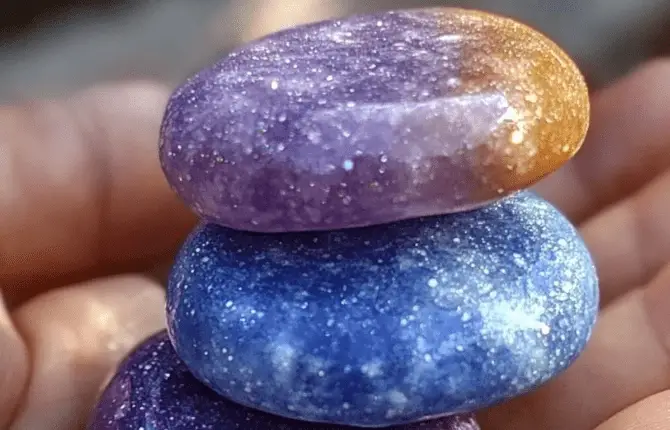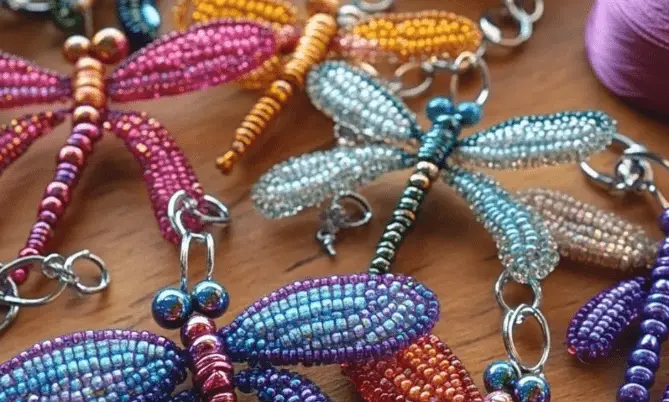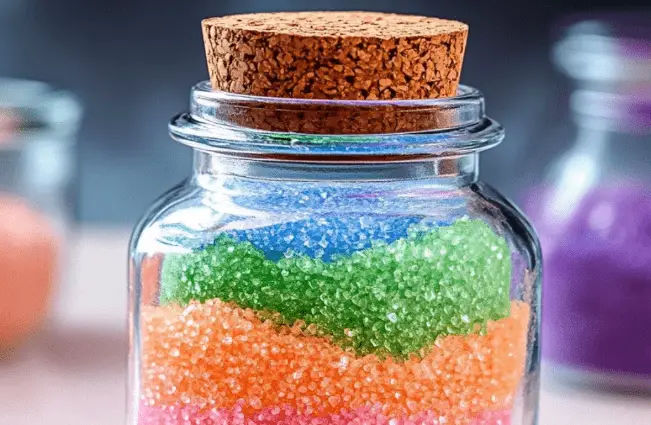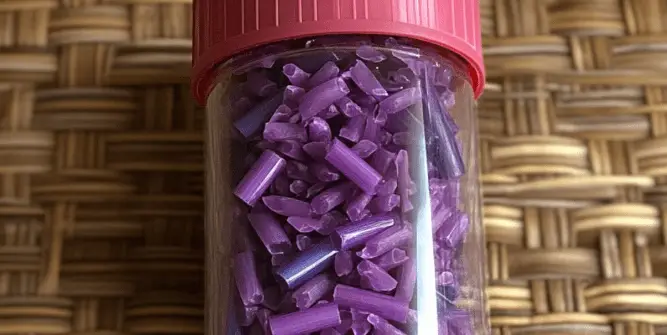Soothing Worry Stones: A Calming DIY Craft to Ease Stress and Spark Creativity
In a world that often feels overwhelming, simple, tactile tools like worry stones can offer a small but meaningful sense of comfort. These handmade sensory objects are great for stress relief, mindfulness, and creative expression, especially for kids and teens. The DIY version of soothing worry stones combines a classic salt dough recipe with colorful gel food coloring and glitter to create beautiful, palm-sized tokens that are as enjoyable to make as they are to hold.
Crafting worry stones is an excellent activity for children and adults alike. Whether you’re a parent looking for a quiet afternoon project, a teacher seeking a classroom mindfulness tool, or someone just looking to unwind with a bit of hands-on creativity, this project is easy, engaging, and effective.
Table of Contents
Ingredients
To create your own soothing worry stones at home, you’ll need the following materials:
- 2 parts flour
- 2 parts salt
- 1 part warm water
- Gel food coloring
- Sparkly glitter
These simple ingredients come together to form a pliable, customizable dough that’s easy to shape and mold. The ratio system makes it simple to scale the recipe up or down depending on how many worry stones you’d like to make.
Instructions
- Mix the dry ingredients. In a medium-sized mixing bowl, combine 2 parts flour and 2 parts salt. Stir until evenly blended. This mixture forms the base of your salt dough, giving it structure and grainy texture.
- Add the water. Slowly pour in 1 part warm water, stirring continuously as you go. A dough will start to form. If it seems too dry or crumbly, add a little more warm water, one splash at a time, until the consistency is soft and workable.
- Incorporate color and sparkle. Add a few drops of gel food coloring in your chosen shade and knead the dough until the color is fully mixed in. Then sprinkle in glitter and knead again. The result is a soft, shimmery dough that’s ready to be shaped.
- Shape the worry stones. Take small portions of the dough and roll them into cubes or oval-shaped balls. Use your thumbs to press shallow indents into the center of each piece. These thumb-sized impressions give the stones their characteristic feel and make them satisfying to hold and rub.
- Let them dry. Place the finished stones on a tray or flat surface and allow them to dry overnight, or until completely hardened. Depending on the humidity and size of the stones, drying may take 24 to 48 hours.
Once hardened, your worry stones are ready to use, gift, or display.
Benefits of This Craft
Soothing worry stones offer a range of emotional, sensory, and educational benefits, especially for children and teens:
- Reduces anxiety and stress. The simple act of rubbing a worry stone can be a calming ritual that helps ease anxious feelings and regulate emotions.
- Encourages mindfulness. Worry stones can be incorporated into breathing exercises or mindfulness routines, helping to bring focus to the present moment.
- Supports fine motor skills. The shaping, kneading, and decorating process builds hand strength and coordination in younger crafters.
- Boosts creativity. Choosing colors, mixing glitters, and designing unique shapes allow for imaginative, self-expressive play.
- Promotes emotional expression. Kids can create worry stones to match their moods or use them as tools for managing big feelings in a quiet, constructive way.
This project is also highly adaptable, making it ideal for classrooms, therapy sessions, family crafts, or individual relaxation time.
Tips
To get the most out of your worry stone-making experience, keep the following tips in mind:
- Use gel food coloring rather than liquid to achieve more vibrant colors without making the dough too wet.
- Add the water gradually to avoid sticky dough. It’s easier to add more water than to fix overly wet dough.
- Knead thoroughly for even coloring and to work out air bubbles. This will help the stones dry more smoothly.
- Flatten the bottom of each stone slightly if you plan to display them upright on a surface.
- Use a baking tray lined with parchment paper for drying to prevent sticking.
You can also make themed worry stones, like rainbow patterns, galaxy-inspired swirls, or matching color sets for mood tracking.
What Does It Taste and Look Like?
While these worry stones are not edible, the ingredients do give them a natural, dough-like scent and feel. Once dry, they take on the appearance of hand-sculpted gems—matte on the outside with a shimmery finish from the glitter. The thumbprint indent in each one adds a pleasing tactile feature, inviting gentle rubbing and handling.
The color depends entirely on your creative input. Bright shades with sparkles offer a magical effect, while softer pastels give a soothing, natural vibe. When made in sets, they resemble polished stones or marbles and make lovely decorative pieces in bowls, pockets, or jars.
How to Store
To keep your worry stones in good condition after crafting, here are some simple storage tips:
- Let them dry completely before storing. Premature storage can cause mold or warping.
- Store in a dry, cool place away from direct sunlight to avoid fading or cracking.
- Place in small boxes or jars lined with tissue paper for protection and easy organization.
- Avoid water exposure after they’ve dried, as salt dough can absorb moisture and deteriorate over time.
- Use clear sealant spray (optional) if you want to protect the stones from wear and tear or frequent handling.
Properly stored, your worry stones can last for months or even years as comforting tools or decorative keepsakes.

Creating Soothing Worry Stones is more than just an art project—it’s a mindful activity that helps promote emotional well-being through creativity and sensory play. Whether you’re helping a child manage anxiety or looking for a calming DIY to unwind after a long day, these worry stones are a beautiful, tactile reminder to pause, breathe, and refocus.
With minimal materials and endless possibilities for customization, this craft is accessible, rewarding, and full of heart. It’s a hands-on way to channel feelings into something beautiful and functional.
For more creative and calming projects like this one, visit More DIY craft ideas and explore a collection of engaging activities to brighten your day.
FAQ
Can I bake the worry stones to speed up drying?
Yes, you can bake them at a low temperature (about 200°F or 93°C) for 1–2 hours to speed up the hardening process. Keep an eye on them to prevent browning or cracking.
Can I paint the stones instead of adding food coloring to the dough?
Absolutely. Once dry, you can paint the stones with acrylic paints and seal them with a clear coat if desired.
Are these worry stones safe for young children?
Yes, when made with non-toxic ingredients. However, they are not meant to be put in the mouth, so supervision is recommended for toddlers.
Can I reuse leftover dough?
Leftover dough can be stored in a sealed container or plastic wrap for a day or two. If it dries out, add a small amount of water and knead before using again.
Do worry stones actually help with anxiety?
They can. Worry stones are a proven mindfulness tool for many people. The tactile act of rubbing the stone can serve as a grounding technique during stressful moments.







